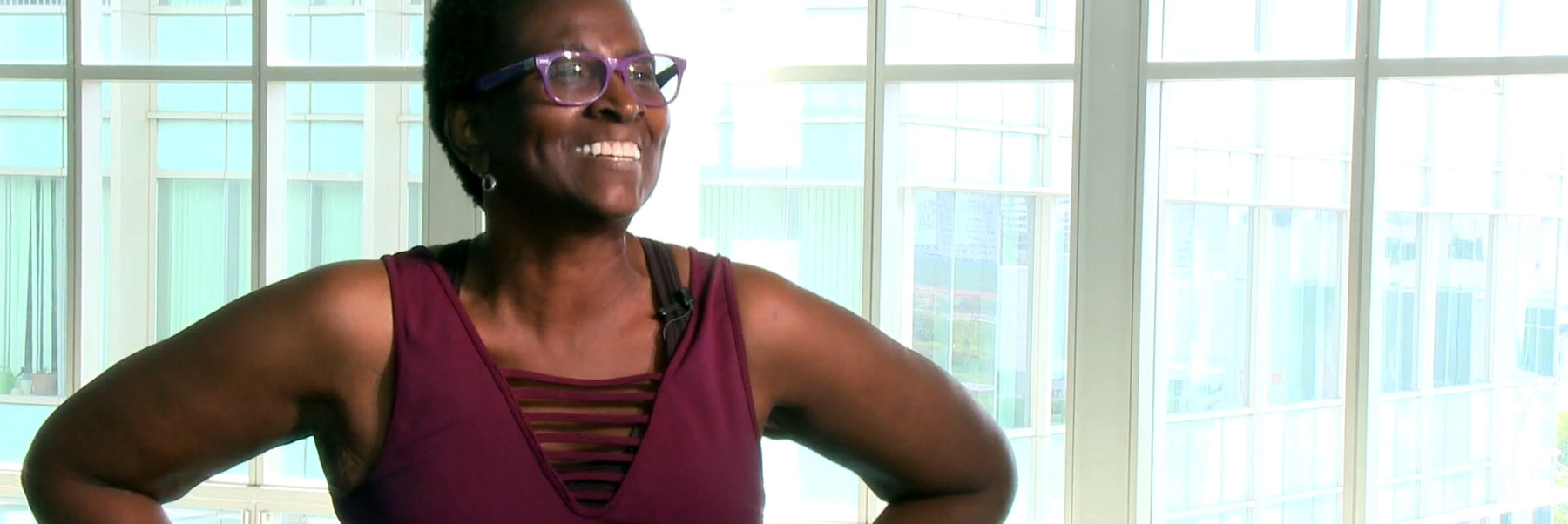Breast Cancer Survivor: Grandma is Back and Ready to Play

With three children and nine grandchildren spread around the country, Patricia Emard, 64, who retired as assistant director of bus operations for Miami-Dade Transit, enjoys traveling and visiting family members. In fact, in the spring of 2015 she was staying with her daughter, Rachelle, in Washington, D.C., when she discovered a lump in her breast during one of her regular self-examinations.
“I knew immediately that I needed to return to Miami and that I would be well taken care of at Sylvester Comprehensive Cancer Center,” she said. “The car almost drove itself home.”
Emard was familiar with UHealth – the University of Miami Health System because she was already a patient at Bascom Palmer Eye Institute. When she arrived home in Miami, however, something occurred that some might call a coincidence, but that she considers a sign from above.
“As soon as I turned on the television, an ad for Sylvester came on that said, ‘Yesterday, we mapped the DNA of Patricia’s breast cancer,’” Emard said. “I couldn’t believe it. I knew then that I had made the right choice.”
After undergoing a mammogram, ultrasound and surgery, Emard was placed under the care of Dr. Frances Valdes-Albini, assistant professor of clinical medicine, for chemotherapy and follow-up treatments at Sylvester at Kendall.
“She and the whole staff at Kendall took very good care of me,” said Emard. “They were awesome. From the moment I stepped inside, they were warm and welcoming. They explained everything so well and gave me the information I needed about self-care.”
“Patricia did everything right,” said Valdes. “A woman knows her own breasts better than anyone else, and if anything seems out of the ordinary, she should contact her doctor immediately. Early detection and treatment are the keys to the most successful possible outcomes.
“I want to point out, however, that although breast self-exams are important, one should not be misled by normal breast self-exams. They do not replace screening radiographic imaging, such as mammograms, which are key to early detection and cure.”
So far, the news has been good: Emard’s most recent scans are clear.
Emard also believes that her attitude played an important part in her recovery.
“Healing became my job,” she said. “Just like when I used to go to work, I got dressed up to go to my appointments. I tend to be a goal-oriented person. In this case, my goal was to be healed of cancer. I also learned to ask for help from others.”
Valdes points out the importance of communication in healing.
“Communication between the patient and the entire team is key during treatment to achieve the goal of completing the course of adjuvant therapy,” she said. “It’s a team effort, because you want to administer treatment within a certain time frame, minimize side effects and maximize the outcome.”
Because of the physical weakness that often results from cancer treatment, Emard also joined Sylvester’s U Survive & Thrive program, which helps patients return to active life through a special eight-week regimen conducted at the UHealth Fitness and Wellness Center. She says it has made a big difference in her recovery.
“Stacy Cutrono, the oncology exercise physiologist at Sylvester who founded the program, talks about the importance of movement,” said Emard. “I needed to hear that, and it made all the difference that I was assisted by specially trained exercise physiologists. Now I can walk up stairs, walk through the supermarket and around the block. I’m living life again.”
That includes visiting family.
“The best part is being with my grandchildren again,” she said. “They are too small to understand when you’re sick. They just want to play. Well, Grandma is back.”
Tags: breast cancer care, breast cancer survivor, Dr. Frances Valdes-Albini, Sylvester Comprehensive Cancer Center, U Survive & Thrive
